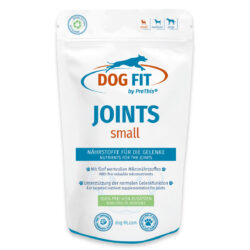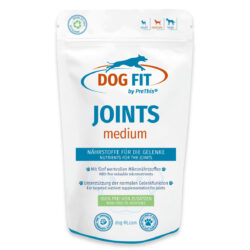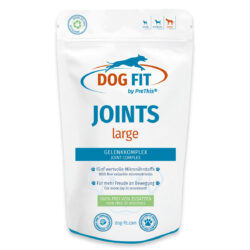Osteoarthritis in dogs
Osteoarthritis in dogs: Understanding joint wear and tear and taking early action
Osteoarthritis (arthrosis deformans) is the most common joint disease in dogs. It is a degenerative disease of the joints caused by the progressive degradation of articular cartilage. This cartilage serves as a buffer and gliding surface between the joint bones. If it deteriorates, the bones increasingly rub against each other – this can lead to pain, inflammation, and restricted movement.
Although osteoarthritis is usually considered a sign of aging, it can affect dogs of all ages. Symptoms range from occasional lameness and stiffness after standing to chronic pain and restricted mobility. A change in gait, a lack of interest in playing, or difficulty climbing stairs can be the first signs.
Common Causes of Osteoarthritis in Dogs
Cartilage Degradation
With increasing age, the natural regenerative capacity of cartilage tissue decreases. The production of synovial fluid also decreases. This creates a lack of cushioning between the joints, which promotes wear and tear.
Joint Dysplasias
Congenital or acquired deformities such as hip dysplasia (HD) cause uneven loading of the joint surfaces. The result is excessive pressure on certain areas of the cartilage, which causes faster wear.
Malnutrition
Permanent, inappropriate feeding, especially with low-quality industrial feed, can lead to a deficiency in important micronutrients. This impairs cartilage metabolism and the production of synovial fluid.
Obesity
Excess weight places additional mechanical strain on the joints. The resulting pressure on the joint surfaces significantly accelerates cartilage wear.
The Osteoarthritis Prognosis
Unfortunately, once damage to the joint cartilage has occurred, it cannot be completely reversed. However, by taking joint nutrients, the cartilage can partially regenerate, and more synovial fluid is produced. Therefore, support for osteoarthritis primarily aims to prevent further damage and relieve pain. In this way, mobility can be maintained as best as possible, allowing the dog to satisfy its natural need for movement.
Injuries or Inflammation
Traumas such as strains, bruises, or inflammation in the joint area can also cause cartilage damage, which later leads to chronic osteoarthritis.
Osteoarthritis: Course and Prognosis
Unfortunately, damaged cartilage cannot be fully regenerated. However, the progression of osteoarthritis can be slowed. The earlier the first signs are recognized and appropriate action taken, the better the quality of life can be maintained. The goal of every measure is to reduce pain, prevent inflammation, and maintain mobility for as long as possible.
What can be done for dogs:
- High-quality, species-appropriate food (no dry food)
- Exercise without excessive strain (e.g., swimming, controlled walks)
- Support through targeted physiotherapy
- Advice from a veterinary naturopath or veterinarian



